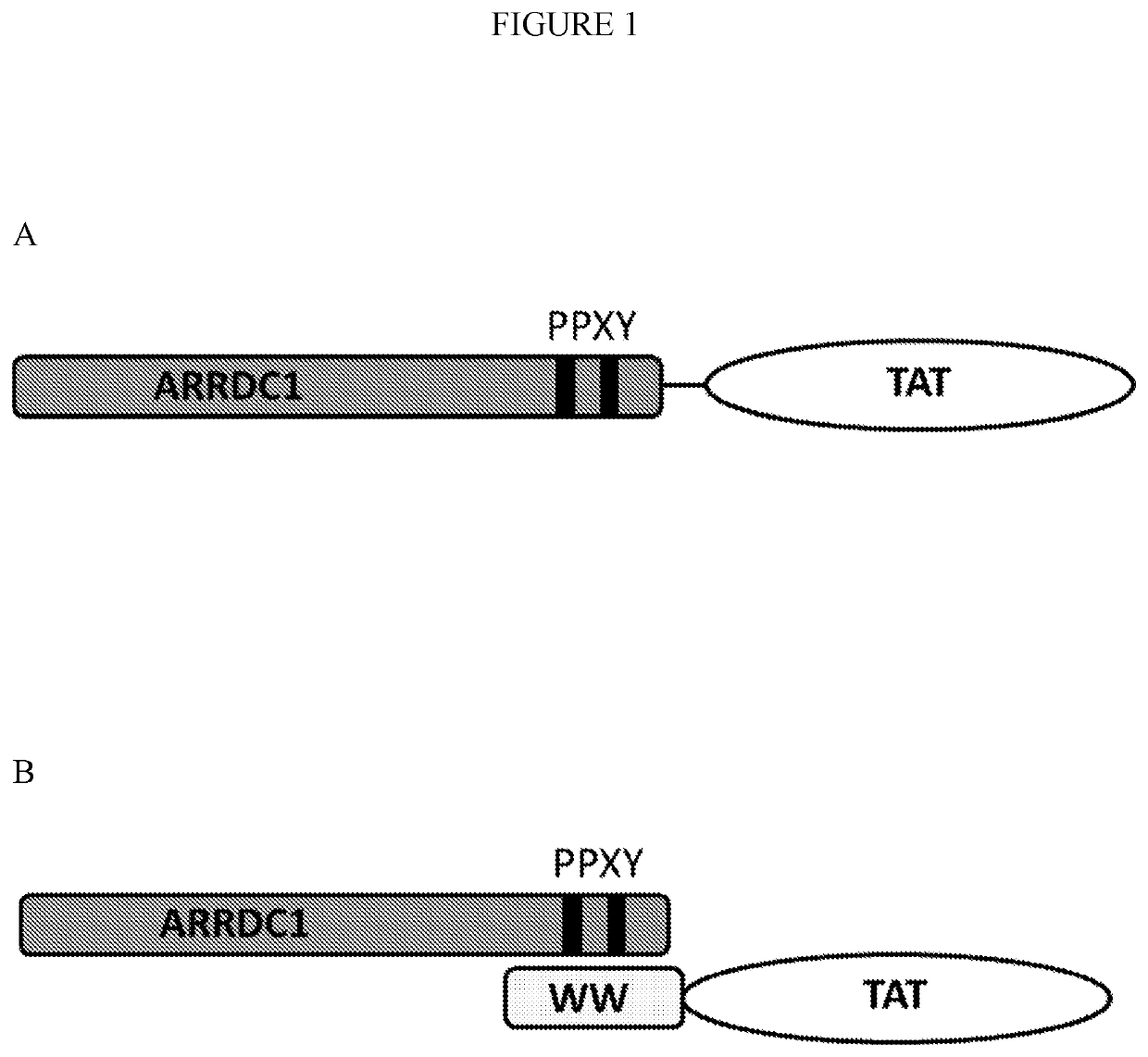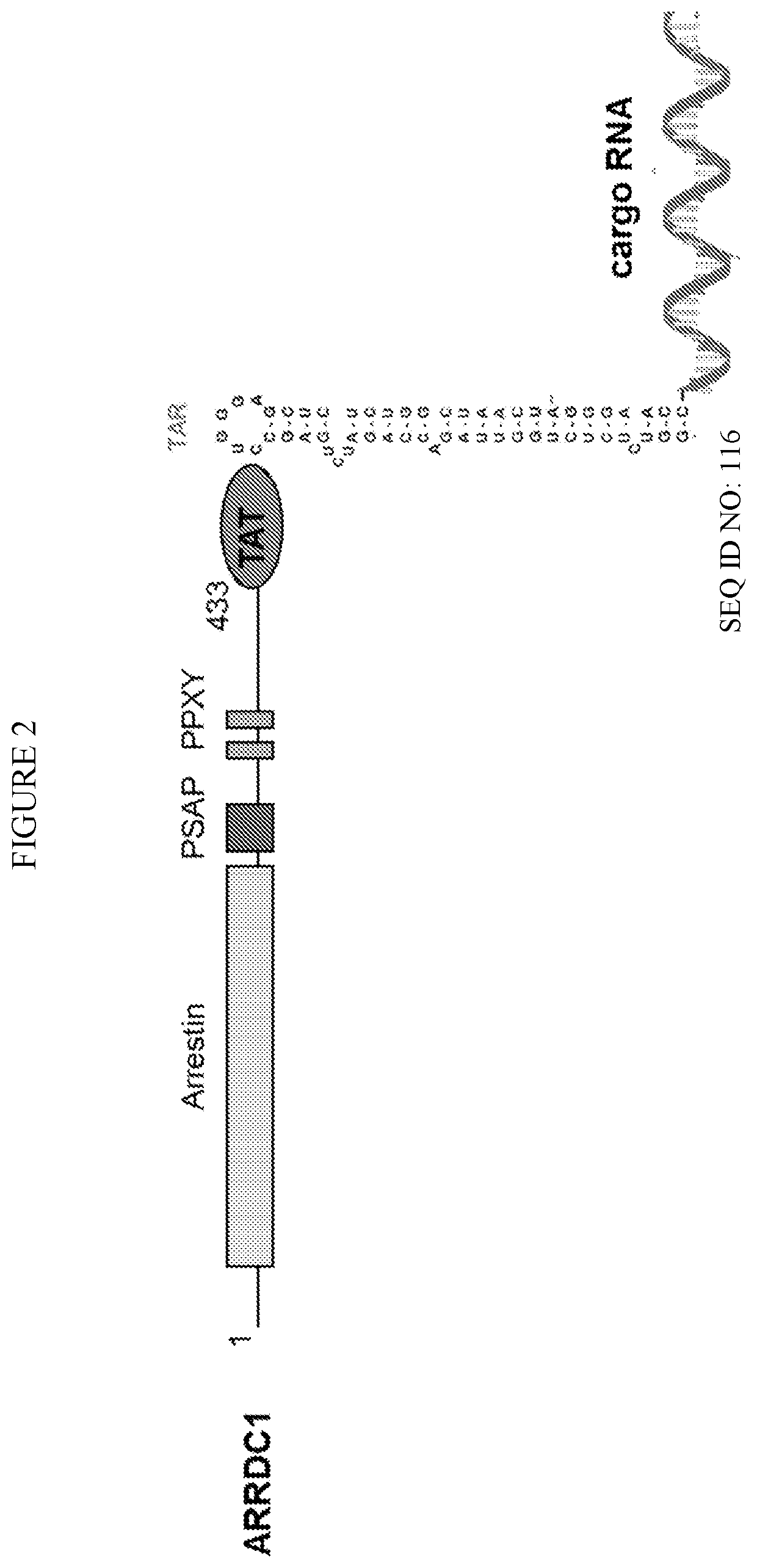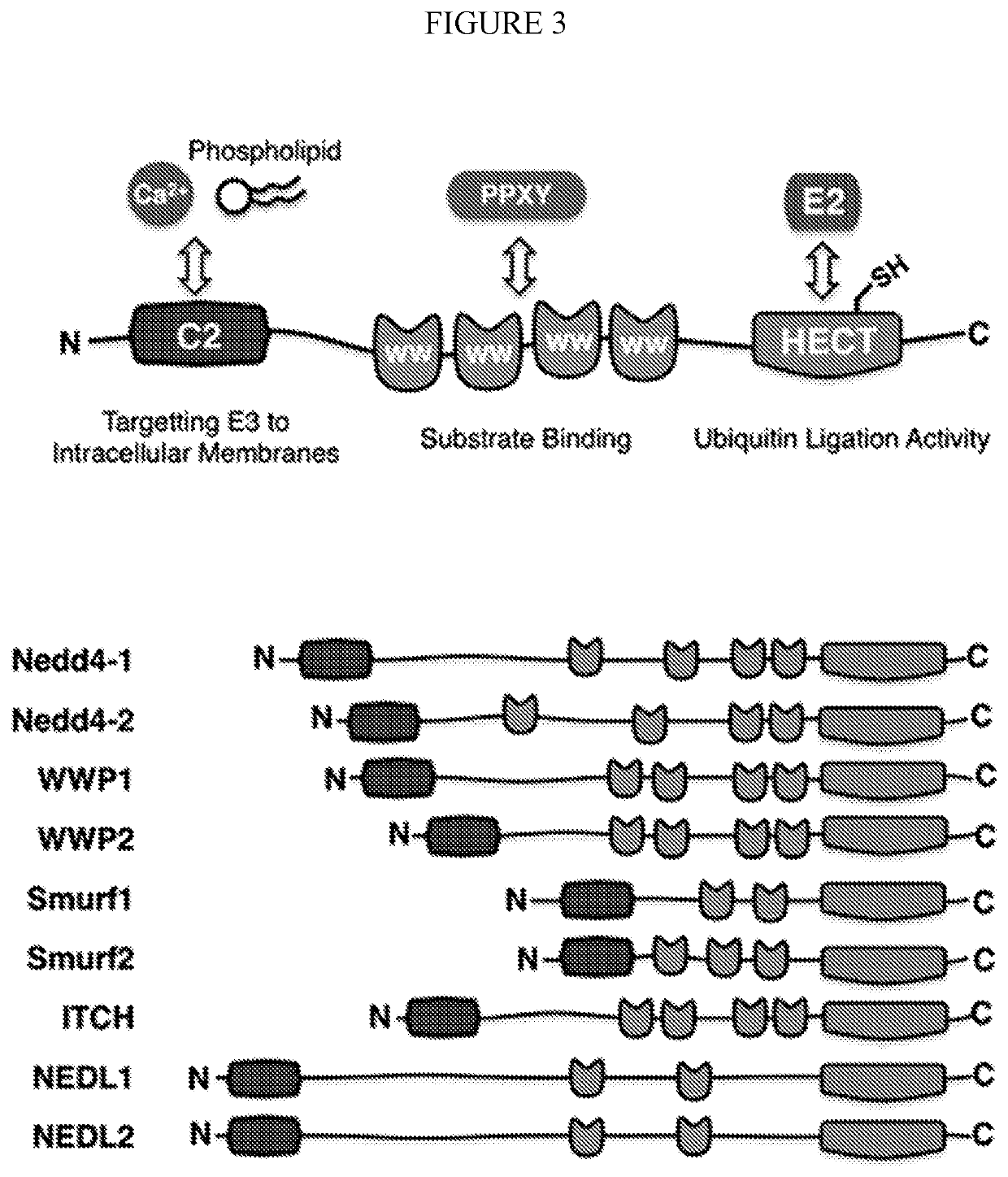Delivery of therapeutic rnas via arrdc1-mediated microvesicles
a technology of arrdc1 and microvesicles, which is applied in the direction of microcapsules, viruses/bacteriophages, peptide sources, etc., can solve the problem of limited delivery of ribonucleic acids to cells
- Summary
- Abstract
- Description
- Claims
- Application Information
AI Technical Summary
Benefits of technology
Problems solved by technology
Method used
Image
Examples
example 1
Cargo RNAs into ARMMs Via Binding RNAs that Specifically Bind to RNA Binding Proteins
[0195]An ARRDC1 protein fused to Tat maintained the ability to bud out of cells as ARRDC1-containing ARMMs. For example, cells expressing either the ARRDC1-Tat fusion protein or the ARRDC1 tagged with an OLLAS epitope tag (ARRDC1-OLLAS), which lacks the Tat peptide, produced ARMMS containing ARRDC1-Tat or ARRDC1-OLLAS, respectively. The Western blots (FIG. 5) show that plasmid DNA encoding GFP alone or TAR fused to GFP (TAR-GFP) were both capable of expressing GFP protein in cells transfected with the plasmid DNA.
[0196]Furthermore, TAR-GFP mRNA was more efficiently packaged into ARMMs using the Tat / TAR system. The relative amount of GFP mRNA detected in ARMMs as compared to their respective ARMM producing cells was significantly increased when ARRDC1-Tat and TAR-GFP were co-expressed in cells as compared to cells that co-expressed ARRDC1-OLLAS and GFP; ARRDC1-OLLAS and TAR-GFP; or ARRDC1-Tat and GFP...
example 2
and Delivery of RNAs (e.g., mRNA Encoding p53) Via ARMMs
[0199]RNA molecules may be broadly used as therapeutic agents (Kole, R., et al., “RNA therapeutics: beyond RNA interference and antisense oligonucleotides.”Nature reviews. Drug discovery 11, 125-140, doi:10.1038 / nrd3625 (2012); the contents of which are hereby incorporated by reference in their entirety), but often have to overcome cellular barriers (Dowdy, S. F. “Overcoming cellular barriers for RNA therapeutics.”Nature biotechnology 35, 222-229, doi:10.1038 / nbt.3802 (2017); the contents of which are hereby incorporated by reference in their entirety). Accordingly, the ability of ARMMs to package and deliver RNAs to recipient cells was tested. To package RNAs into ARMMs, advantage was taken of the Tat (transactivator of transcription) protein, which binds specifically to the stem-loop-containing TAR (Trans-activating Response element) RNA (Roy, S., et al., “A bulge structure in HIV-1 TAR RNA is required for Tat binding and Tat...
PUM
 Login to View More
Login to View More Abstract
Description
Claims
Application Information
 Login to View More
Login to View More - R&D
- Intellectual Property
- Life Sciences
- Materials
- Tech Scout
- Unparalleled Data Quality
- Higher Quality Content
- 60% Fewer Hallucinations
Browse by: Latest US Patents, China's latest patents, Technical Efficacy Thesaurus, Application Domain, Technology Topic, Popular Technical Reports.
© 2025 PatSnap. All rights reserved.Legal|Privacy policy|Modern Slavery Act Transparency Statement|Sitemap|About US| Contact US: help@patsnap.com



